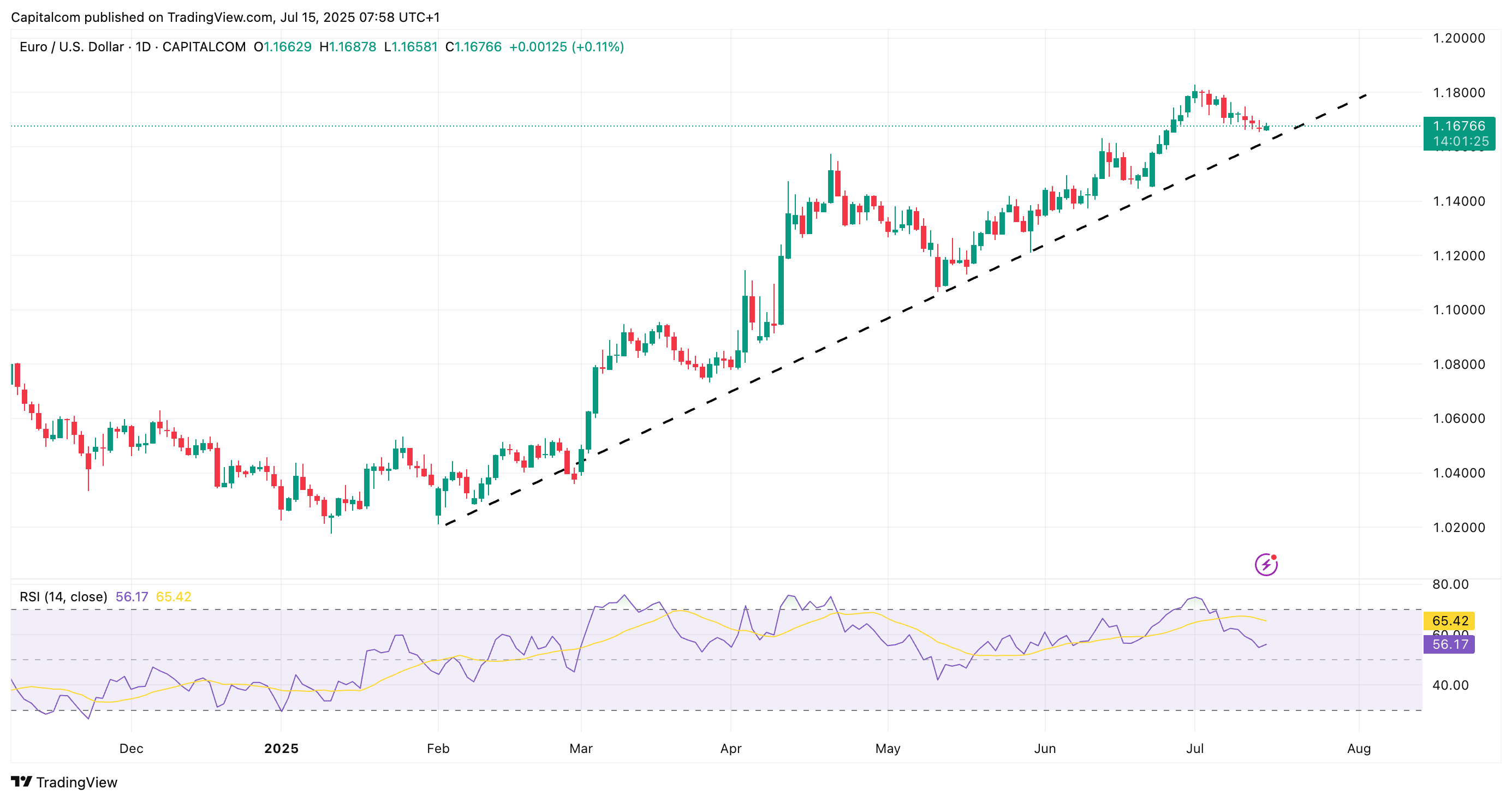EUR/USD: bullish narrative tested by U.S. trade threats
US tariff threats weigh on euro sentiment as the dollar regains the upper hand
The EUR/USD currency pair has enjoyed a strong upward trajectory for most of 2025, but recent developments have introduced uncertainty into what had been a well-supported trend. Much of the pair’s gains earlier this year were driven by U.S. dollar weakness, but the narrative has become more complex heading into July.
Dollar Weakness vs. Euro Strength
At a glance, the euro appears to have outperformed—but much of this strength, particularly against the dollar, has been the result of a softening greenback. The U.S. dollar index has been in decline for much of the year, providing a favourable backdrop for EUR/USD. However, the euro's relative performance against other major currencies like the yen and sterling suggests intrinsic strength as well.
That strength stems in part from the European Central Bank’s (ECB) proactive policy stance. As one of the first major central banks to begin cutting rates following the COVID-era hikes, the ECB has lowered rates by around 200 basis points over the past 12 months. Unlike the Federal Reserve or the Bank of England, which have adopted a “wait-and-see” approach, the ECB acted pre-emptively, moving before inflation data confirmed a slowdown. This decisiveness has been well-received by markets, reinforcing confidence in the euro.
A Shift in Sentiment
Now, however, the momentum has started to shift. The U.S. dollar has regained some strength, supported by resilient economic data and expectations of tighter fiscal conditions. This comes just as U.S.-EU trade tensions escalate. Talk of 30% tariffs on European goods has triggered concerns about growth in the EU, especially for export-dependent economies like Germany. Policymakers from both Germany and France have publicly warned that such tariffs would be detrimental to transatlantic relations and European economic performance.
These developments have weighed on EUR/USD, halting the rally and prompting questions about whether we’re seeing a healthy pullback—or the start of a broader trend reversal.
While macroeconomic fundamentals still support the euro—growth remains resilient, and inflation is hovering near the ECB’s 2% target—the threat of new U.S. tariffs has cast a shadow over the optimistic outlook. On the technical side, the euro remains in a structural uptrend, with a pattern of higher highs and higher lows since the start of the year.
However, the pair is now approaching a key inflection point. The last significant high was just above 1.18, while a prior support level around 1.16 could become pivotal. If EUR/USD breaks below this region—particularly if it breaches the rising trendline connecting the year’s higher lows—it may signal that the bullish trend is faltering.
Still, recent price action suggests strong two-way interest. Despite downside pressure, daily closes have often found support near their opening levels, indicating active participation from both buyers and sellers. This suggests that traders are cautious but not panicking—a pullback, not a panic.
EUR/USD daily chart
(Past performance is not a reliable indicator of future results)
What to Watch Next
Market focus will remain on two fronts. First, the evolution of trade policy rhetoric between the U.S. and EU will be crucial. If the 30% tariff threat materializes, it could catalyse a sharper sell-off in EUR/USD. On the other hand, signs of diplomatic progress could lift the euro and reinforce bullish sentiment.
Second, U.S. inflation data and labour market trends will influence Fed expectations. Strong data may temper expectations for rate cuts, boosting the dollar. Conversely, any softness could renew downward pressure on the greenback, giving the euro room to recover.
For now, the EUR/USD trend remains technically intact, with recent moves resembling a healthy pullback rather than a breakdown. But as we approach key support levels and await further clarity on both trade policy and economic data, traders would do well to stay vigilant. Whether this is a pause or a turning point will soon become clear—and the price will tell the story.